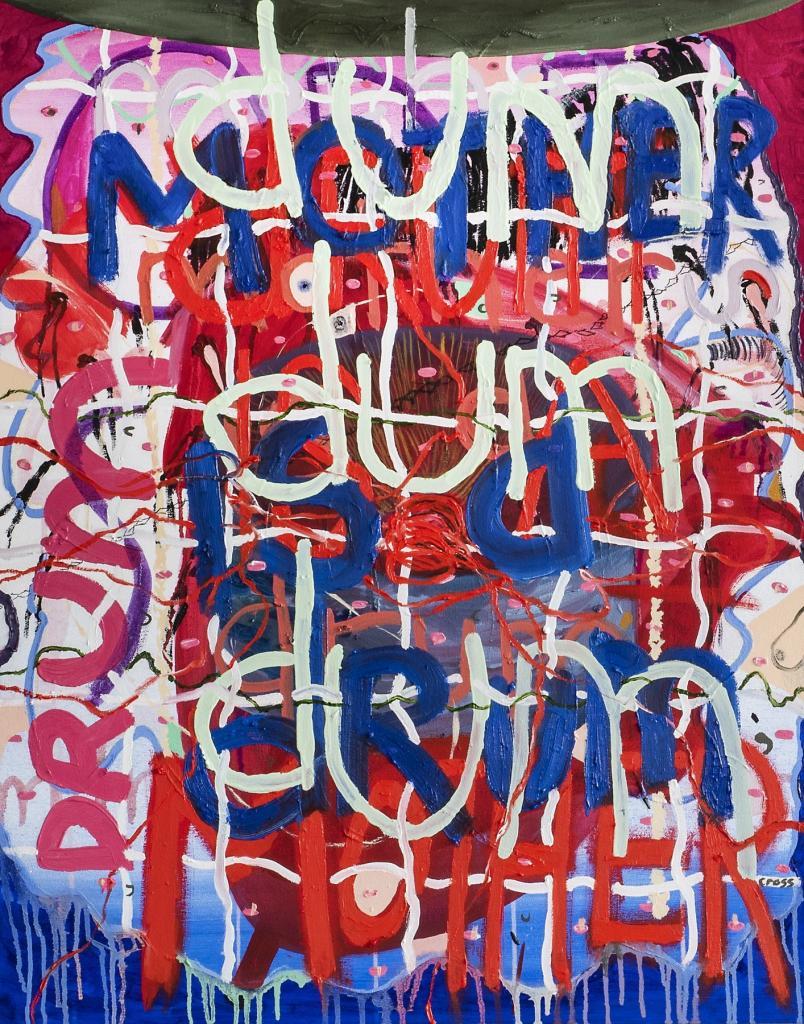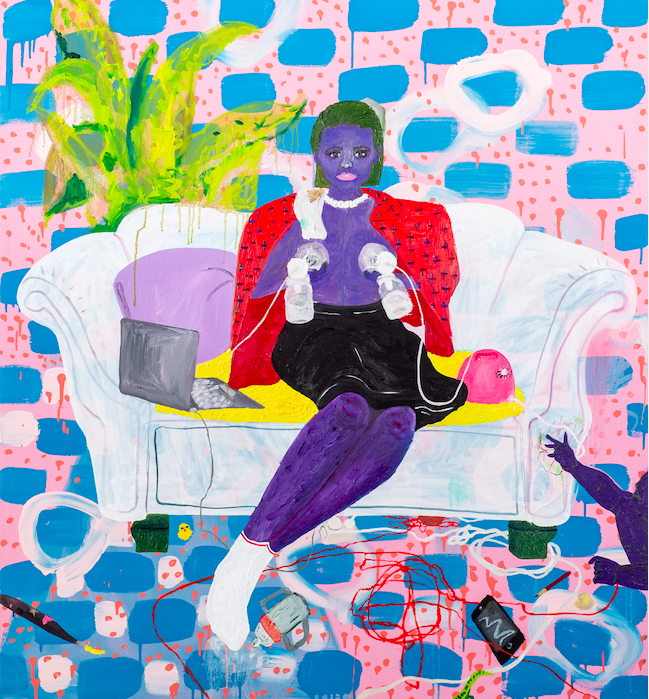MOTHER IS A DRUM // colossal beating and echoes of fierce love with Grace Cross
Repeated gestures inspire a moment of reflection. A sequence of actions pulled out of the meadow of everydayness—pumping, bending, holding, stirring, picking, picking up. Gestures that are simultaneously symbolic and tangible. They evoke a response but they also have pragmatic work to do. Cross delights in details; a salt shaker, a yellow duck toy, a baby’s bottle, a red ball of yarn interweaving various elements, all telling of the experiences of motherhood. Narration through shape, colour and texture.
MOTHER IS A DRUM is a solo exhibition by Grace Cross, presented at SMITH in Cape Town (31 July – 31 August 2019). The show is an exploration of motherhood and the physical actions that accompany the experience – the revelations of motherhood, what Lucienne Bestall, in a text accompanying the exhibition, refers to as the pleasures of abiding, of repetition, of surrender, of finding in ordinary devotion the most perfect communion.
Below is a short conversation with the artist, Grace Cross, about the show.

NM: Looking through the work and thinking through these physical actions of motherhood, I can’t help but think of choreography – a sequence of repeated actions; repeated day in, day out. Is this something you can comment on?
GC: So much of being a mother is a blur of ritual and repetition undertaken with huge amounts of energy and love. There is both pleasure and boredom derived from these daily meditations of care. It is like a dance between you and your child, they reverberate and reflect off you constantly, learning and growing how to be in the world. I love the idea of a mother being like a drum; able to bounce back, to always reflect an immediate response, and for play to emerge through the repetition of its beats.
I wanted repeated phrases and patterns in the paintings to reflect the rituals of motherhood. The urging, scooping, wiping, rocking, picking up becomes the daily beat of early mothering. You see these repetitions in the painted text ‘pat pat pat pat’ or ‘pick drop pick drop pick’. It requires powers of ordinary devotion. And that very ordinariness builds through its repeated everydayness to a kind of colossal, beating, fierce love between mother and child that there is nothing quite like.

NM: The titles of the works are quite potent, what is the process through which you named the works?
GC: I like to title work with poetic text that illuminates and opens up what is inside the frame. Many titles link to theories I’ve been researching, like Winnicott’s ‘good enough mother’, or the term ‘when one becomes two’, which looks to reframe the way we talk about babies without referring to the mother, as they are absolutely inseparable entities from each other.
Others refer to common english expressions and idioms like ‘the mother of invention’ or ‘the hand that rocks the cradle rules the world’. ‘Jugs’ is a work with many breasts patterned and built upon each other, some leaking, some vessels overflowing. The title references ceramic jugs that hold liquid, and refers to the colloquium for breasts, and also the juggling act that mothering requires.
NM: The yarn (particularly red) is a recurring thread in the works, does this speak to something specific?
GC: I see painted red thread in my work as connecting me to a legacy of women that have come before me, and as the figurative umbilical cord that connects me to my child. My practice is connected to textile making, and to a history of women’s work with fibre. Thread is something that binds, sutures and fixes through the violence of puncturing when sewing.
Thread joins together other threads when being woven. It can connect and break apart. I want my paint brush to act like thread, bringing symbols, people and histories together and apart. I paint the thread to literally and symbolically connect objects in the paintings. Red is a colour that is synonymous with life; with desire, with love and loss and pain, and to childbirth. The red thread is the symbol that returns again and again in my work as a link and a gesture to a female lineage I am tethered to.

NM:What have you found in your meditations on motherhood? Is this work a celebration, a further contemplation, a wondering?
GC: I think the show is trying to give an honest representation of my experience of motherhood. Both celebrating it because it has delivered love and meaning into my life, but also looking at the reality of the tax it takes on energy reserves, on sleep, on space and how it monopolizes one’s identity. There is a stark before and after, and becoming a mother is like crossing a river into a foreign land, where your hormones and self is altered unutterably.
It is both a shock and thrill to discover this new person you become. Motherhood has shifted my creative practice, both physically and psychically, because of its time restraints and mental limitations. The work is an outpouring of that experience (the guilt, the shame, the legacy, the joy, the laughter, the depression, the weight). I feel it reflects both a prideful boast (look what I delivered into the world) as well as a darker look at what becoming a mother takes away from you. So much of mothering is conducted privately. I wanted to represent it in a way that is loud and honest and that pays tribute to the journey.
For enquiries please contact info@smithstudio.co.za

